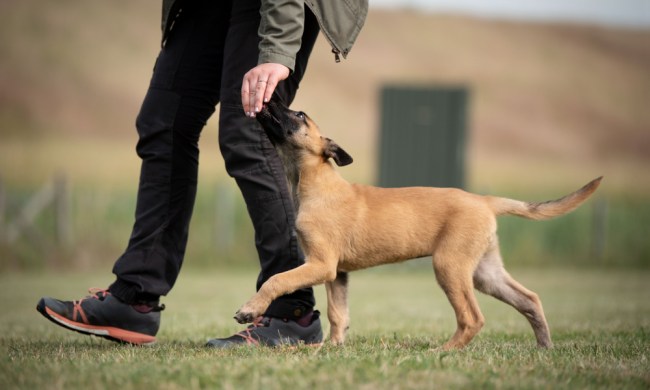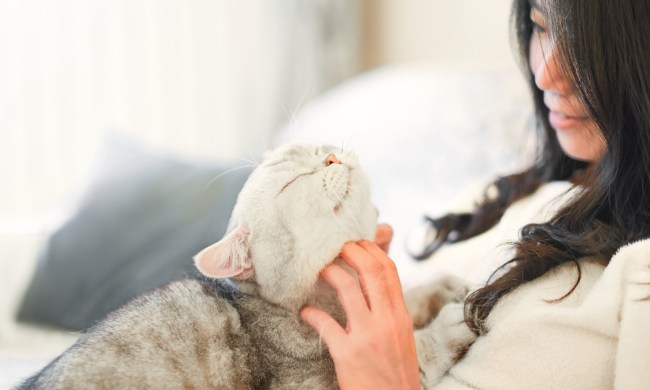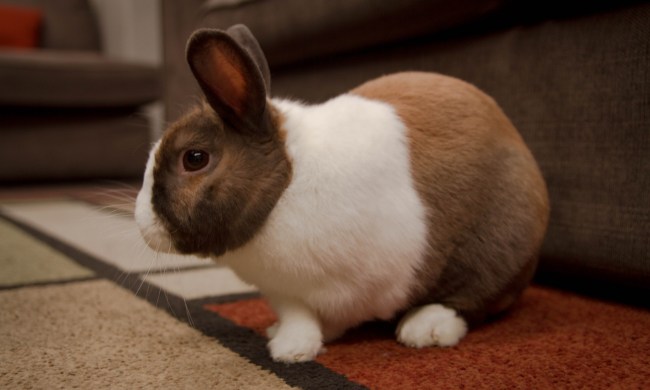Is there anything cuter than a parrot doing tricks? We don’t think so, either. Contrary to what some people may think, it isn’t cruel to train your bird to do tricks. Training your feathered friend provides mental stimulation and physical activity and helps create a lasting, affectionate bond. Not only is training your parrot an effective bonding technique, but it also will make cleaning your parrot’s enclosure and trips to the vet much easier. If you’ve ever wondered how to train a parrot, you’ve come to the right place. We’ll walk you through training tips, common training mistakes you can avoid, and all the supplies you’ll need.
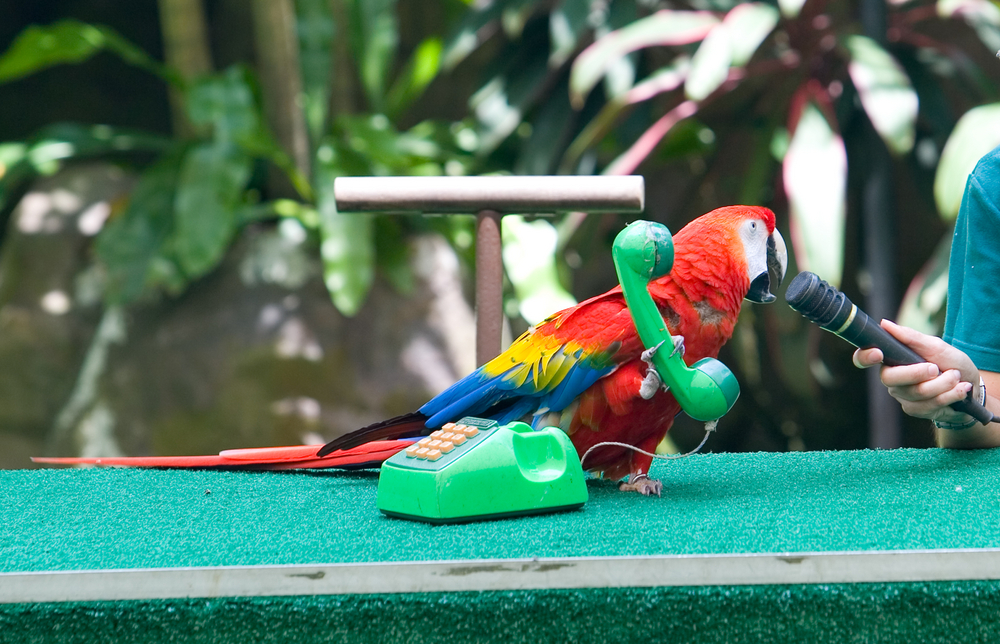
Getting started
As it turns out, you really need only a couple of things: a training perch and some of your bird’s favorite healthy treats. Training any animal requires time and patience. Here are a few tips to help you out.
- Work on training only when you and your bird are calm. Many parrot owners claim their bird can sense their moods, and you’ll want to avoid agitating your bird if you’re feeling anxious, sad, or angry.
- Keep training sessions brief, positive, and to the point. While research shows that their brains have evolved much like human brains, parrots still have short attention spans. Around 10–15 minutes several times a day is ideal for training.
- Don’t give your bird a treat every single time he does a trick. Instead, praise your parrot rather than doling out a treat after every repetition.
- Look on the bright side if sessions don’t go the way you want. It’s easy to become frustrated when your parrot isn’t learning as quickly as you would like. Stay positive and consistent, praise your bird for a job well done, and try again tomorrow.
Bird training basics
When it comes to training your bird to do tricks, it’s best to start with the basics. Teaching your parrot to step up from a perch — whether it’s an actual perch or your hand or wrist — makes vet visits and cage cleanings a breeze. Here’s how you can train your parrot to do several entertaining (and sometimes useful) tricks.
Step up
Approach your parrot when he’s alert and attentive. If he’s distracted by food, he won’t want to learn. Due to your parrot’s body shape, he’ll have a much easier time stepping up than stepping directly across or down. Hold your perch of choice slightly above the level of your bird’s claws, offer your bird a treat, and say, “Step up.” Keeping the treat out of your parrot’s reach makes it much more likely that he’ll take a step. Eventually, your parrot will know it’s time to step up without a treat. In some cases, you’ll only have to hold out your arm for him to step onto it.
Wave
Your feathered friend will need to know how to complete the step-up trick before you can start teaching him to wave. When your bird is sitting on his perch, say “wave” and offer him your hand like you would during the step-up trick. Parrots move one foot at a time, so when your parrot lifts a foot, slowly move your hand away. Praise your bird for waving, and make sure you give him a tasty treat.
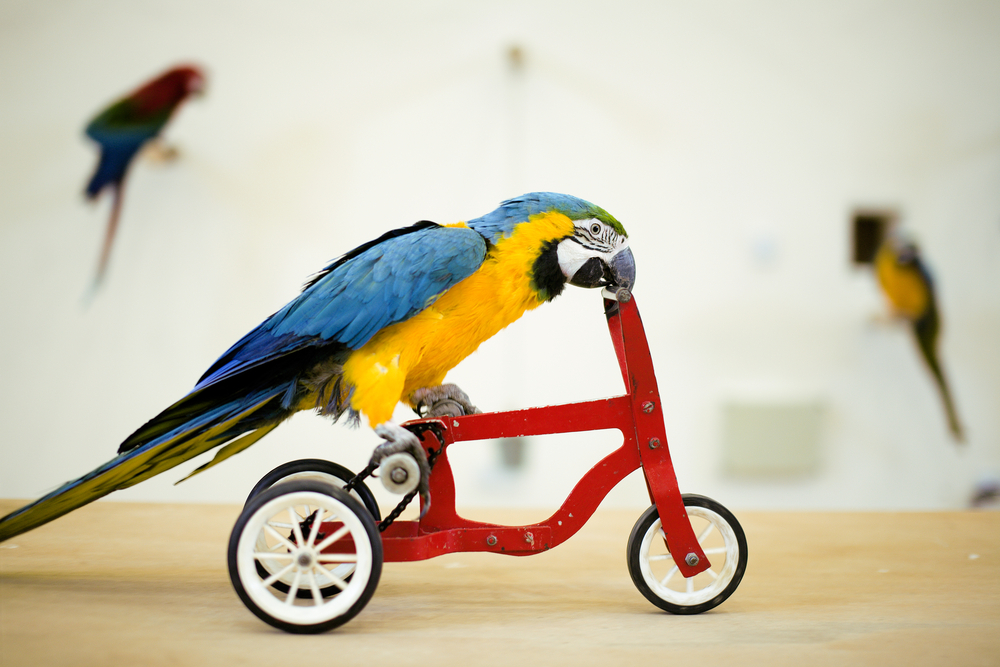
Dance
Did you know that you can teach a parrot to dance? Not all parrots will cooperate, but it’s adorable when they’re willing to play along. All you have to do is play your favorite music and dance. Scientific studies have proven that parrots love music almost as much as humans do. You can also find videos of parrots dancing online. Seeing other birds dance to the beat may be all the encouragement he needs to start grooving.
Fetch
Just like dogs, parrots can be taught to fetch. Offer your bird a small toy he can hold in his beak, and when he takes it from you, tell him “fetch.” Allow your parrot to play with the toy as long as he wants. After he loses interest and lets it fall from his beak, tell him “drop it” and give him a treat. Repeat this step a few times. Next, place the toy on the floor and let your parrot pick it up. Be sure to tell him “fetch” when he picks it up and “drop it” when he lets it go. After several repetitions, try to catch the toy when he drops it. Eventually, your parrot will associate dropping his toy into your hand with praise and treats.
How not to train your parrot
We’ve covered a few basic tricks you can teach your bird, but learning what not to do is equally important.
- Don’t shout at your parrot when he misbehaves. This teaches your bird to fear you, which can have serious consequences.
- If your parrot is doing something naughty, don’t try to punish him. Even negative attention is better than no attention, so you may be reinforcing his behavior without meaning to.
- Don’t be negative. You want your bird to look forward to training sessions, not dread them.
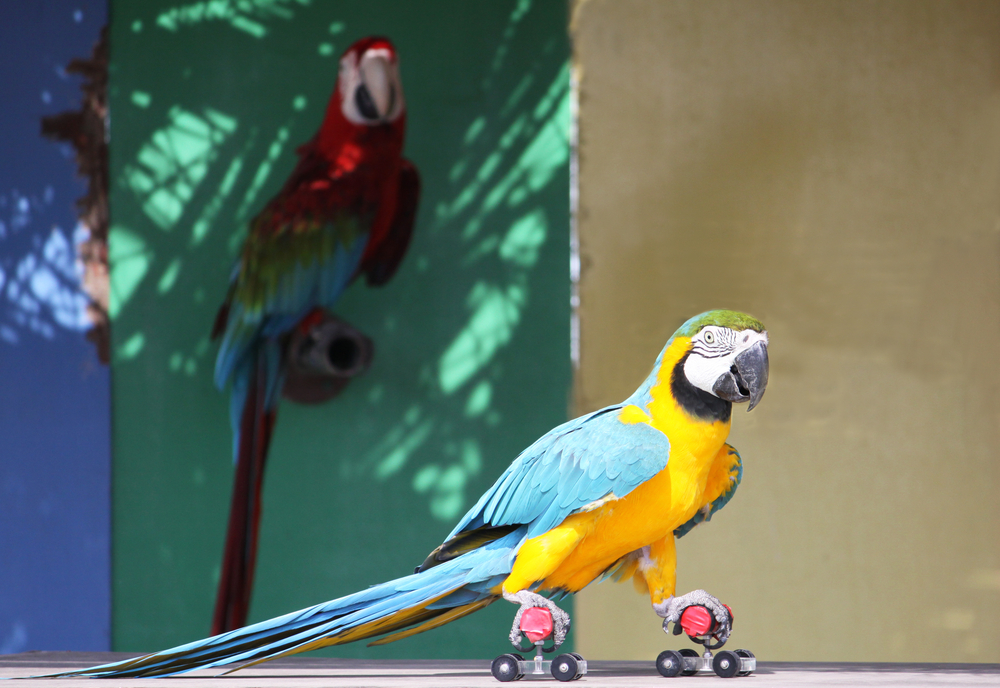
Getting to know your bird’s personality is essential to training. Once you know his likes and dislikes, you’ll be able to offer the most appealing treats — and tell when he’s had enough for the day. Training takes patience and persistence, but the bond you’ll build is worth every minute.

